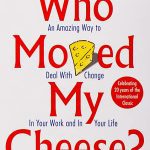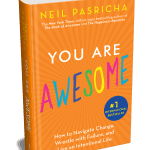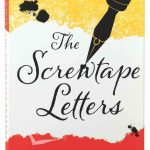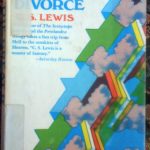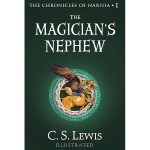March: Book One by Congressman John Lewis is an insightful and inspiring graphic novel that chronicles his journey as a civil rights activist in the 1960s. This New York Times Bestseller follows the story of Lewis during some of the most significant moments of the Civil Rights Movement, including the Freedom Rides, Selma to Montgomery marches, and his friendships with Martin Luther King Jr., Stokely Carmichael and other leading figures of the time.
Written by Lewis himself and illustrated by Nate Powell, this book is a powerful tribute to those who fought for justice during an era of tremendous struggle and social upheaval. Its vivid artwork adds a visual depth to Lewis’ story, transporting readers back in time to experience the events first-hand. With its honest portrayal of the injustices faced by African Americans during this period, March: Book One serves as an important reminder of our collective history and a call to action for current social change.
In addition to being a thought-provoking read, March: Book One also provides valuable lessons on courage and perseverance in the face of adversity. By showing how individuals can make a difference in their communities and beyond, it serves as an inspiring model for young activists today. With its strong messages about justice and equality, it is sure to spark meaningful conversations about racism and civil rights.
March: Book One Review

1) March: Book One is an inspiring story of courage and determination written by Congressman John Lewis, Andrew Aydin, and Nate Powell. This graphic novel chronicles Congressman Lewis’s life-long struggle for civil rights during the turbulent 1960s, as well as his experiences in the Civil Rights Movement during that time. It is a powerful look into history and a reminder of the importance of standing up for what you believe in, no matter the odds.
Key Features:
- The first part of a three-part graphic novel series
- Written by Congressman John Lewis, Andrew Aydin, and Nate Powell
- Recounts Congressman Lewis’s experience with the Civil Rights Movement during the 1960s
- Provides insight into a pivotal moment in American history
- Powerful illustrations from Nate Powell bring the story to life
This captivating narrative begins with young John Lewis growing up on a farm in rural Alabama, and follows him through his courageous acts of civil disobedience throughout the early 1960s. From sit-ins at lunch counters and freedom rides on buses to his participation in the historic March on Washington, readers get an intimate look at how history was made during this era. With vivid artwork from Nate Powell that brings each moment to life, March: Book One, is sure to inspire readers of all ages.
Product Details
| Product | Details |
|---|---|
| Name | March: Book One |
| Author | John Lewis |
| Genre | Graphic Novel/Nonfiction |
| Publisher | Top Shelf Productions |
| Publication Date | August 6, 2013 |
| Number of Pages | 112 pages |
March: Book One Pros and Cons
March: Book One is an exciting and thought-provoking graphic novel by civil rights leader John Lewis. It tells the story of his involvement in the civil rights movement, from the Montgomery Bus Boycott in 1955 to the march on Washington in 1963. The illustrations by Nate Powell capture the emotion and power of this important moment in history. The Pros:
1. March: Book One is a great introduction to the civil rights struggle for younger readers.
2. The vivid illustrations bring the story to life and help readers connect with the characters.
3. The book gives insight into how people can come together to fight for a cause they believe in.
4. It’s an inspiring story of courage and perseverance that will leave readers feeling empowered.
The Cons:
1. Some readers may find the text difficult to read due to its historical context.
2. Some scenes may be too intense or disturbing for younger audiences.
3. The artwork may not appeal to all readers due to its stylized nature.
For those who are looking for an insightful, informative, and emotionally gripping account of the Civil Rights Movement, March: Book One is a must-read! This powerful graphic novel offers a unique perspective on one of America’s most significant moments in history, making it an invaluable resource for anyone interested in learning more about this period of time and its impact on our nation today. With riveting artwork and thoughtful writing, it’s sure to captivate both young and old alike!
Who are They for
March: Book One is an inspiring and award-winning graphic novel, written by the legendary civil rights activist John Lewis. This powerful story explores the pivotal events of the civil rights movement through the eyes of Lewis, a leader of the NAACP who was there during many of these historic moments.
March: Book One details Lewis’ personal journey as he and other brave individuals fought against segregation, racism, and injustice in America. Through vivid artwork and compelling storytelling, readers are taken on a journey to witness Lewis and his fellow activists standing up for justice in the face of violence and oppression.
This critically acclaimed graphic novel won numerous awards including a National Book Award, an Eisner Award for Best Reality Based Work, and the Coretta Scott King Honor Award for its incredible contributions to literature. It has been praised for its honest portrayal of history and its impactful message about courage and perseverance in difficult times.
A must-read for any student or adult interested in learning more about the civil rights movement or just looking for a captivating story, March: Book One is an invaluable addition to any library’s collection.
My Experience for March: Book One

When I first read March: Book One, I had no idea what to expect. But as soon as I opened the first page, I was immediately engrossed. Written by Congressman John Lewis, it tells the story of the civil rights movement in a powerful and engaging way.
The narrative follows John Lewis’ journey from his humble beginnings in rural Alabama to the front lines of the march on Washington. With vivid illustrations and gripping stories, it’s almost like you are right there with him, experiencing the events firsthand.
March: Book One is more than just a history lesson; it is an inspiring tale of courage and resilience. It reminds us that even in the face of tremendous adversity, we can make a difference if we stay true to our ideals. This story will stay with me for years to come.
What I don’t Like
1. Limited amount of artwork: The book is composed entirely of black-and-white images, which can be limiting for some readers who prefer more visual elements.
2. Text-heavy: Despite the presence of a few illustrations, the majority of March: Book One is composed of text, making it heavy reading for younger readers or those with short attention spans.
3. Political themes: As a memoir about civil rights, this book includes topics that may be difficult to discuss with younger audiences and could require additional parental guidance or explanation.
4. Potential triggering content: Many scenes in March: Book One depict violence and racism, which can be unsettling for readers who have experienced similar events in their own lives.
How to Use March: Book One to Become a More Informed Citizen
March: Book One by John Lewis is an amazing graphic novel that chronicles the civil rights movement from the 1960s. It’s a powerful and inspiring story about how one man’s courage can make a difference in the world. But it’s also a great way for readers to learn more about their history and become better-informed citizens. Here are some tips on how to use March: Book One to do just that.
The first thing you should do is read the book. It’s an easy read, with beautiful illustrations and clear text that will help you understand the events of the civil rights movement. As you read, take notes on what stands out to you – be sure to pay attention to any themes or symbolism that you notice. This will be helpful when discussing the book with others.
Once you’ve finished reading, take some time to discuss your thoughts with friends or family members who have also read it. Ask questions about any points of confusion or interpretation, and make sure everyone has a chance to express their opinion. This kind of dialogue will help improve your understanding of the material and its implications for today’s society.
Finally, consider doing your own research on topics related to March: Book One. Look into political organizations and activists who were involved in the civil rights movement, as well as current issues that still need addressing – such as racism, LGBTQ rights, and police brutality – and find out what actions are being taken to address them. By doing this, you can become more informed about the struggles of marginalized people in our society, as well as ways you can help create positive change.
March: Book One is an incredible piece of literature that can be used to inspire meaningful conversations and encourage further exploration into topics related to civil rights. By using it wisely, you can gain an even deeper understanding of these important issues and become a more informed citizen.
Questions about March: Book One
What is March: Book One?
March: Book One is a graphic novel written by Congressman John Lewis and Andrew Aydin, with art by Nate Powell, about the Civil Rights Movement. It’s the first of three books in the series that chronicle Congressman Lewis’ experiences during the civil Rights Movement.
What themes are discussed in March: Book One?
March: Book One discusses themes such as racial injustice, nonviolent protest, and the power of collective action to effect change. It also focuses on John Lewis’ personal story of growing up in rural Alabama and his journey to becoming a leader in the Civil Rights Movement.
Who is the intended audience for March: Book One?
March: Book One is suitable for readers of all ages and backgrounds. It serves as an excellent resource for students studying history, civil rights, or social justice, but it’s also an inspiring read for anyone interested in learning more about this important period in American history.

Hi, my name is Lloyd and I'm a book enthusiast. I love to read all kinds of books, from classic literature to modern fantasy, as well as non-fiction works. I also enjoy writing reviews and giving my opinion on the books that I have read.





